Call Us
+86 136 6007 9809
Call Us
+86 136 6007 9809
Jun. 20, 2023
| Usage environment | Example of usage environment | Plating type | Anti-corrosion requirements | Application Examples |
| Highly corrosive environment, directly impacted by mud and water, sand and gravel areas. | Chassis, the bottom of the engine, skirts, etc. | Zinc-nickel alloy | 720h without red rust | Frame and body connection bolts, steering knuckle and control arm, brake caliper, and steering knuckle connection bolts. Engine fixing bolts, fuel tank connecting bolts |
| Zinc and aluminum coating | 720h without red rust | |||
| Medium corrosion requirements environment, not directly subject to mud, water, or gravel impact of the external body area | Engine compartment, door locks, gas spring bolts, wiper motor, and even dry assembly mounting bolts | Galvanized coating | 96h without white rust, 240h without red rust | Door dumpling chain and lock ring connection bolts, hood, radiator, condenser, intercooler suspension connection bolts |
| Zinc and aluminum coating | 480h no red rust | |||
| Low corrosion requirement environment, cockpit interior bolts | Seat mounting bolts | Electroplated zinc | 72h no white rust 168h no red rust | Instruments, seats and rails, mounting straps, parcel shelf connection bolts |
| Zinc and aluminum coating | 240h without red rust | |||
| Oil and corrosion-resistant | Inside the engine, the gearbox | Oxidation | Eight hours, no red rust | Engine, transmission, and oil contact confined space bolts, etc. |
| Anti-corrosion phosphating | 6/48/72h no red rust | |||
| Protection and decoration | Bolts for connecting exterior and interior parts | Decorative chrome plating | No change in the 48hCASS test | High-end automotive wheel nuts, etc. |
| Connection of dissimilar metals, prone to contact corrosion environment | Exposure to corrosive conditions, such as connecting aluminum bolts | Zinc-nickel alloy | 720h without red rust | Steel fasteners are used to connect aluminum parts, etc. |
| Zinc-aluminum alloy | 720h无红锈720h without red rust | |||
| There are also high-humidity corrosive environments, connecting bolts at spark plugs (copper plating), and assembly parts painted (coating with anti-rust oil). | ||||
Characteristics and Selection of Rivets
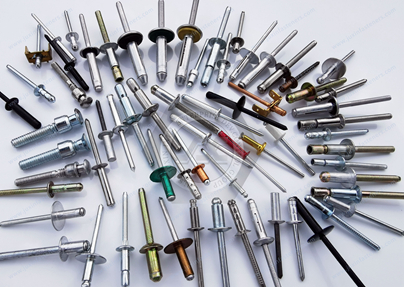 | 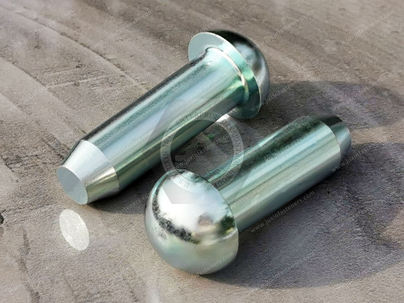 | 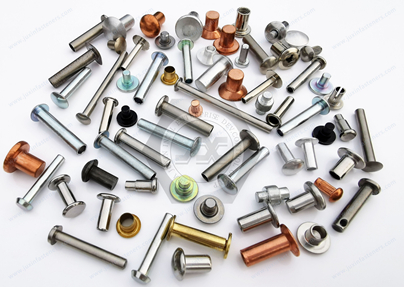 |
1. Pull-through rivets: Pull-through rivets are a type of fastener consisting of a head and a screw bolt, which need to be used with a nut. They are used to secure two parts with through holes. Stainless steel pull-through rivets are resistant to rust and corrosion. These products are suitable for ordinary riveting occasions where it is inconvenient to rivet from both sides. They are widely used in construction, automotive, shipbuilding, aircraft, machinery, appliances, furniture, and other products.
2. Bulbed rivets: Bulbed rivets are fasteners used for blind riveting. After riveting, the core of the rivet pulls the end of the rivet body into a bulbed rivet head, thereby clamping two structural components together. The characteristics of this product include high efficiency, low noise, easy use, reduced labor intensity, and reduced pressure on the riveting surface. This product type is mainly used in construction, shipbuilding, machinery, vehicles, electronics, and other industries.
3. Lantern rivets: Lantern rivets form large flanges and distribute over a large area on the riveting surface, reducing the pressure on the riveting surface. This allows lantern rivets to be used for riveting easily breakable or relatively soft materials, as well as large holes and irregularly shaped holes. This product type is mainly used for automotive parts such as plastic dashboards, interior decorations, and accessories. Lantern rivets allow rivets of a particular specification to be used on materials of different thicknesses, reducing the need for additional rivets. The core of the lantern rivet is locked, making it less likely to fall off during use.
4. Factors to consider when selecting rivets: Strength, including tensile and shear strength. Thickness: measure the required thickness and choose within the recommended range. Rivets are usually made of aluminum, steel, stainless steel, copper, and sometimes unique materials. Diameter, the size of the hole, is crucial for riveting. If it is too small, it will be difficult to insert the rivet, and if it is too large, the joint will not be tight. Shape rivet heads come in various shapes, such as round, countersunk, and large flange. Round heads are commonly used, countersunk heads are used when a flat surface is required after riveting, and large flanges are suitable for soft materials.
Sealing Solution for Rivet Nuts in New Energy Vehicle Battery Packs
As the power source of electric vehicles, the safety of battery packs directly affects the vehicle's overall safety, especially for battery packs installed under the chassis. They need to meet at least an IP67 rating for dust and water resistance to ensure the waterproof sealing performance of the battery pack. The sealing structure design of electric vehicle battery packs primarily involves the mechanical sealing design, which needs to consider the following essential parts: the connection interface between the lower and upper boxes, high and low voltage connectors, and the installation interface between exposed devices and the battery box.
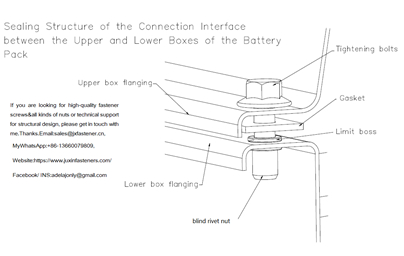 | 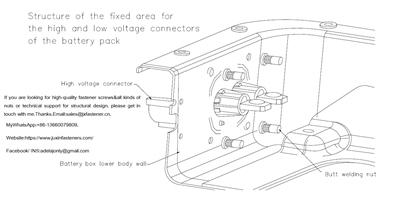 |
The sealing surfaces of the upper and lower boxes of the battery pack are large, and the sealing effect significantly impacts the overall sealing performance of the battery pack. Generally, the upper and lower boxes of the battery pack adopt a design with bent flanges and sealing gaskets. At the same time, the bolt holes of the sealing gasket are pressed onto the rivet nuts on the flange of the lower box, and the coupling between the flanges and the sealing gasket is sufficiently tightened through fastening bolts. This ensures the IP67 dust and water resistance rating of the battery box.
Rivet nuts solve the problems of complex thread tapping on metal sheets, the tendency for welding nuts to burn through thin pipes, and the vulnerability to thread damage. They enable threaded connections between thin plates and other components. Rivet nuts provide high efficiency and low cost for fastening. In the production process of battery enclosures, rivet nuts (primarily M5 and M6 with a stepped thickness of 2.5mm and a flat head with a semi-hexagonal through-hole) are used. Blind hole rivet nuts are mainly installed on the sealing surfaces of the enclosure frame to achieve mechanical connection with the upper cover, and they are also installed on the bottom plate of the enclosure to connect modules or other components to the enclosure.
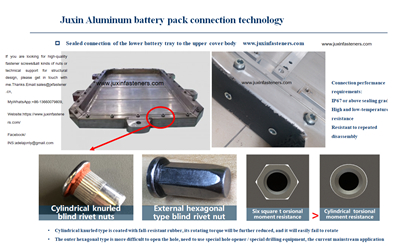 | 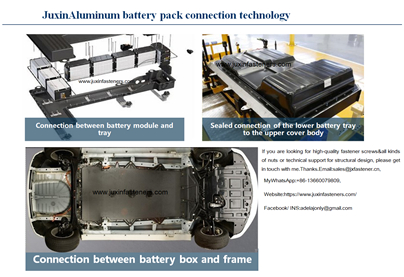 |
To meet the needs of new energy vehicles for different types of battery boxes, the battery box needs to use a double layer of aluminum plate structure to ensure the battery; the connection between the double layer of aluminum plates often uses rivet nuts as fasteners to achieve the connection between the two plates. The structure of the rivet nut in the prior art is a hexagonal rod with a flange on the rod. When the rivet nut is installed with the existing structure, the inner hole of the aluminum plate is not strong enough due to the thickness of the double-layer aluminum plate. The internal hole will be deformed while the force is applied to the rivet nut by the installation gun during the installation process, which reduces the product's performance and lowers the production yield.
The design of the electric vehicle battery pack's sealing structure is critical to its safety, so it is recommended that a reliable and proven sealing solution be used in the design of the battery pack sealing structure. The selected sealing material and scheme should consider not only the compression ratio of the gasket but also the working environment, corrosion resistance, oil resistance, water resistance, high and low-temperature performance, fire resistance and flame retardant performance, cost, repeated disassembly and installation, and essential reliability for long-term use. Only in this way can we design a suitable battery pack sealing scheme to improve the design of battery safety technology and drive the development of the electric vehicle industry.
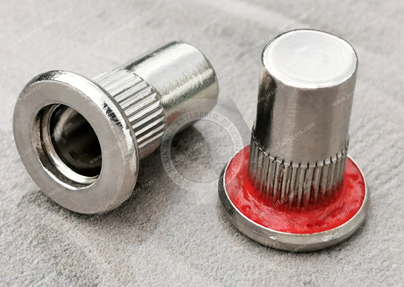 | 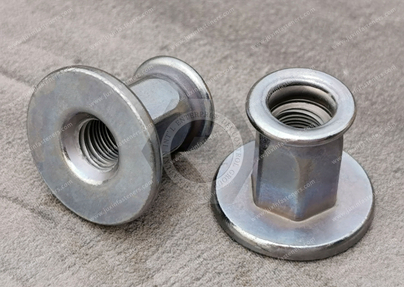 | 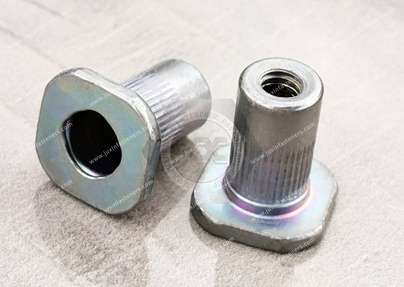 |
The shaft is a typical part; understand the characteristics of the shaft and shaft parts machining processes.
Function and structural characteristics of axle parts
1. Function: Supporting transmission components, transmitting torque or motion, bearing loads, and maintaining a certain rotational precision.
2. Structure: Rotating parts with a length more significant than the diameter.
3. Components: Cylindrical surfaces, conical surfaces, end faces, grooves, arcs, threads, keyways, splines, and other surfaces (such as transverse holes, etc.).
4. Classification: Solid shafts, stepped shafts, hollow shafts, and special-shaped shafts (such as crankshafts, camshafts, eccentric shafts, spline shafts, etc.).
5. Types of axles: The main technical requirements for axle parts include the axle neck and shoulder surfaces, which involve fitting the axle neck (for assembly with transmission components) and supporting the axle neck (for assembly with bearings).
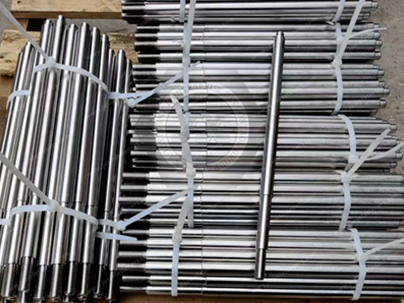 | 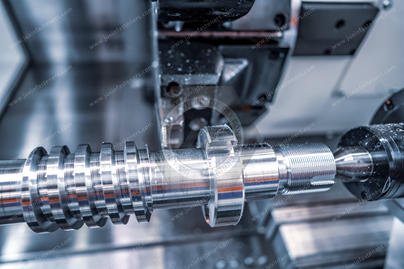 | 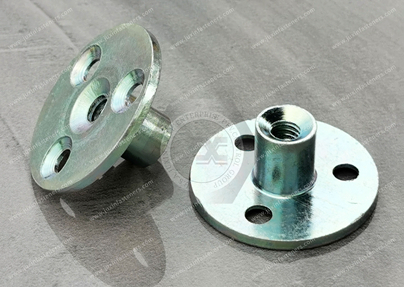 |
Based on the performance requirements of the parts, the main technical requirements are as follows.
1. Dimensional accuracy and geometric shape precision: The diameter accuracy is usually within IT6 to IT9, and sometimes it can reach IT5. The geometric shape precision (roundness, cylindricity) should be limited within the diameter tolerance range. When higher precision is required, shape tolerances should be expressly indicated on the part drawing, typically taking half or a quarter of the tolerance.
2. Position accuracy: For general precision shafts, the radial runout relative to the supporting axle neck is generally 0.01 to 0.03mm, while for high-precision shafts, it is 0.001 to 0.005mm. The end face runout is 0.005 to 0.01mm.
3. Surface roughness: Generally, all machined surfaces of axle parts have surface roughness requirements. The surface roughness requirement for supporting axle necks is Ra 0.16 to 0.8μm, while Ra is 0.63 to 3.2μm for fitting axle necks.
4. Other technical requirements: Heat treatment (such as surface quenching, carburizing, and quenching), dynamic balancing, non-destructive testing, chamfering, etc.
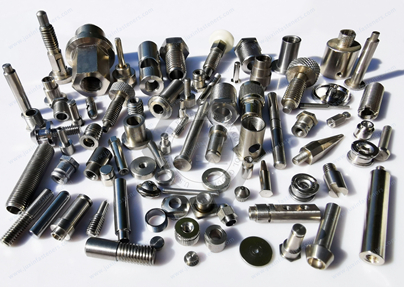 | 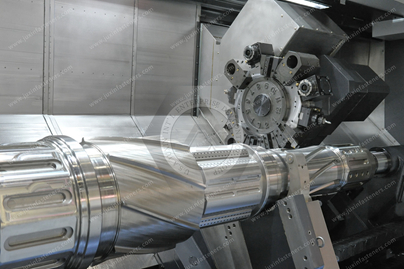 | 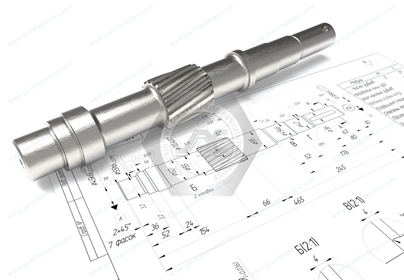 |
Materials, blanks, and heat treatment of axle parts:
Materials for Shaft Components:
1.Non-critical shafts: Ordinary carbon steels Q235A, Q255A, Q275A, etc., without heat treatment.
2. General shaft components: 35, 40, 45, and 50 steels, subjected to normalizing, quenching, and tempering.
Shafts with moderate precision and high speeds: Alloy structural steels like 40Cr are subjected to quenching, tempering, and surface quenching.
3. Shafts with high precision: Bearing steels such as GCr15 and spring steels like 65Mn can be selected, ductile cast iron can be used, subjected to quenching and tempering and surface quenching.
For shafts operating under high speeds and heavy loads, low-carbon alloy steels like 20CrMnTi, 20Mn2B, 20Cr, or 38CrMoAl nitriding steels can be selected and subjected to carburizing, quenching, or nitriding.
4. Complex structures (e.g., crankshafts): HT400, QT600, QT450, QT400.
5. Blanks for Shaft Components: The most commonly used blanks for shaft components are round bars and forgings.
6. For straight or stepped shafts with a slight difference in diameter, round bars are used as blanks.
7. For stepped shafts with a significant difference in diameter or critical shafts, forgings should be used.
8. Nodular cast iron castings can be used for certain large and structurally complex irregular shafts. Heating and forging the blanks can ensure that the internal fibrous structure of the metal is uniformly distributed along the surface, thereby achieving higher tensile, bending, and torsional strength. Therefore, forging is often preferred for critical shafts. Free forging is suitable for small and medium-batch production, while die forging is suitable for large-scale production.
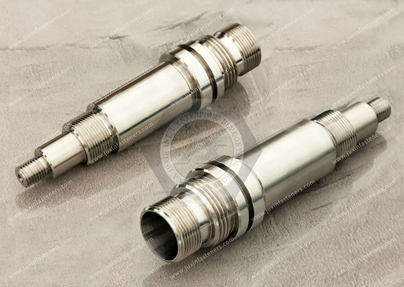 | 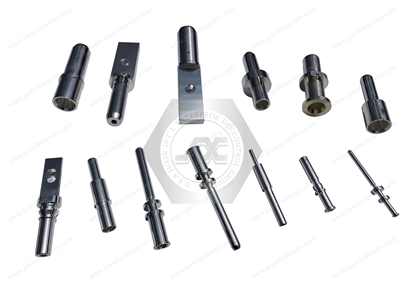 | 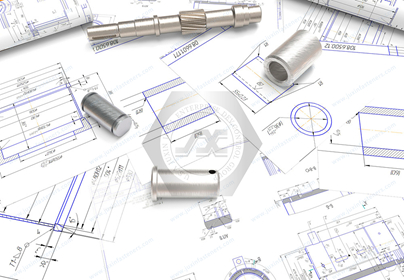 |
Heat Treatment of Shaft Components
Before processing, the forged blanks need to undergo annealing or normalizing treatment (for carbon steels and alloy steels with carbon content greater than ω(C)=0.5%) to refine the grain structure, eliminate forging stress, reduce material hardness, and improve machinability.
To achieve better comprehensive mechanical properties, quenching and tempering are often required, which can be arranged in two ways:
1. When the blank residual allowance is large, tempering is scheduled after rough turning and before semi-finish turning to eliminate residual stress generated during rough turning.
2. When the blank residual allowance is small, tempering can be arranged before rough turning.
Surface quenching is generally arranged before finishing machining to correct local deformations caused by quenching. For shafts with high precision, low-temperature aging treatment is also required after local quenching or rough grinding (performed in oil at 160°C) to ensure dimensional stability. For nitriding steels (such as 38GrMoAl), quenching and low-temperature aging treatment should be conducted before nitriding. The quality requirements for tempering are also strict, requiring uniform refinement of the martensite structure after tempering and limiting the ferrite content within 0.8-0.10mm below the surface to no more than ω(C)=5%. Otherwise, it may cause nitride brittleness and affect the quality of the shaft.
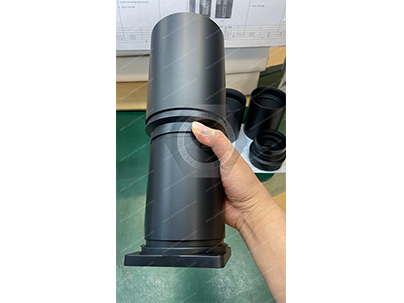 | 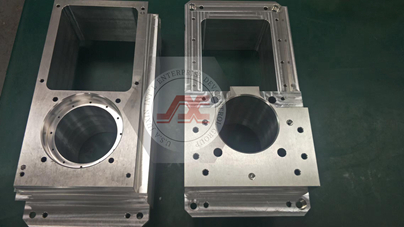 |
Contact Us
Tel.:
+86 020 8621 0320
+86 020 3121 6067
Technical Support:
Navigation
SEND INQUIREY